Orbea is the second notable brand to build its dedicated cross-country race bike around 120mm of travel, front and rear – 20mm more than the ‘average’ XC bike.
Like Scott (with its 120mm Spark RC), Orbea is resolute that this extra travel doesn't exclude it from life between the tapes.
So, does the additional travel help or hinder this Basque race bike, and how much does the updated geometry play a part?
Orbea Oiz M-TEAM frame details
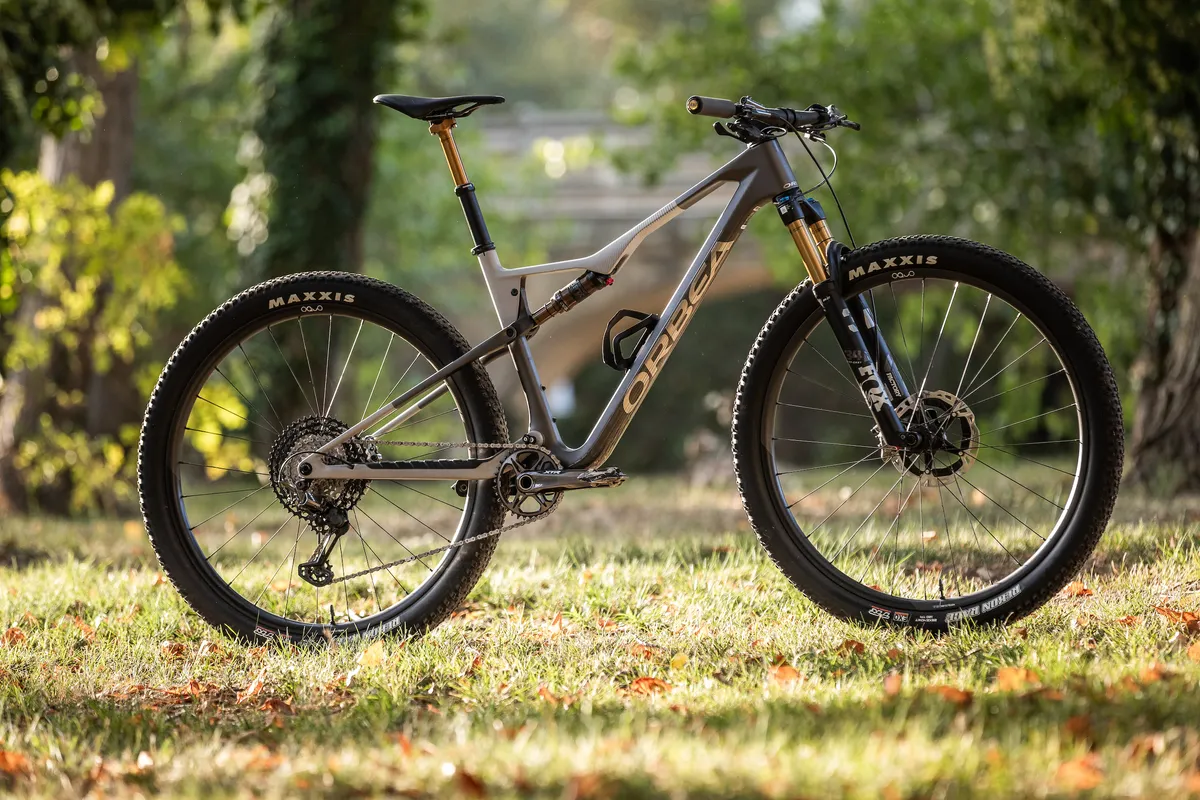
The Oiz will be available with two grades of carbon, and in an alloy version. I tested the top-level, high-modulus OMX carbon frame. This version is built with higher-grade carbon, shaving frame weight to a competitive 1,740g (Med, inc shock).
The most obvious difference from the OMR frame is that this version utilises the lighter Flat Mount rear brake mount, rather than the Post Mount on the OMR frame.
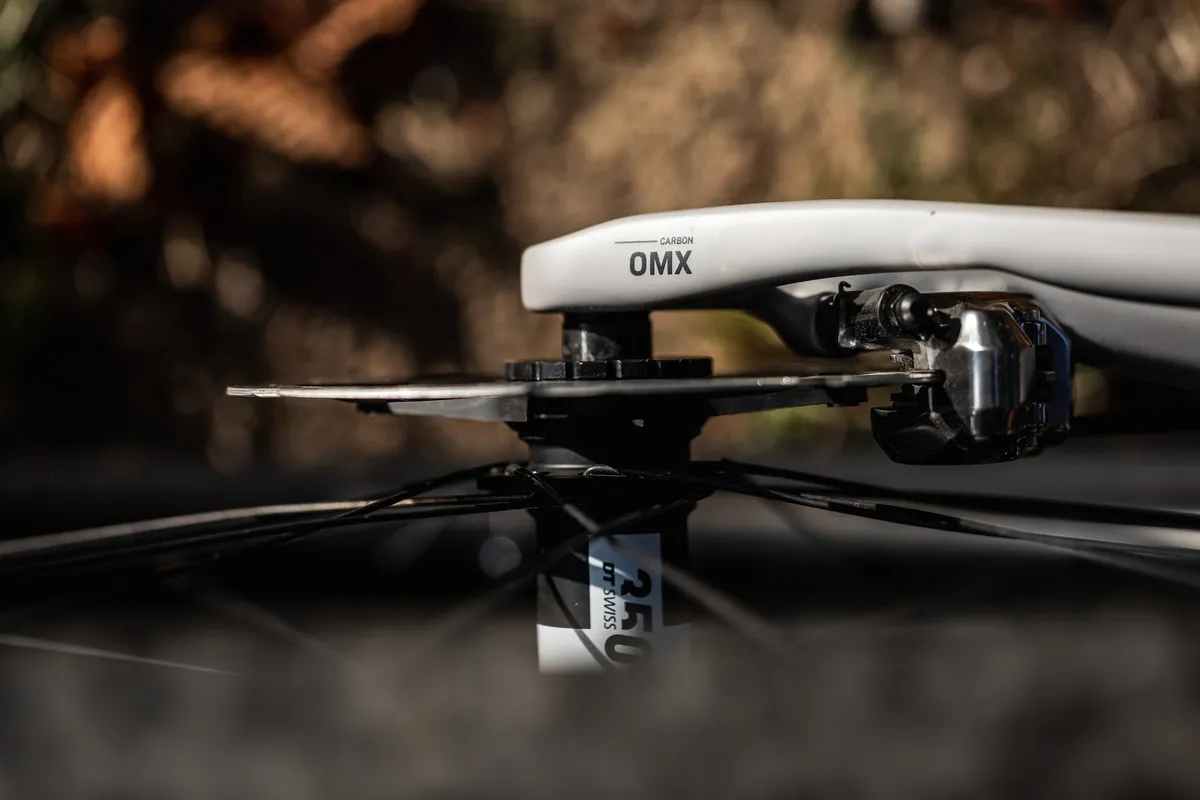
Higher-end brakes from the likes of Shimano and SRAM are compatible with this standard, first found on road bikes, whereas the cheaper bike models require the use of Post Mount, to ensure compatibility with more value-oriented brakes.
Visually, very little has changed from the previous version of the Oiz – the changes are more than skin deep, though. Tube profiles have been altered to improve stiffness in the rear triangle by 12 per cent, while pivots benefit from larger or double-roller bearings to aid reliability.
Orbea has routed cables though its own in-house designed headset. This, it claims, gives a cleaner look and reduces steering resistance because cables flex less when the bars are turned.
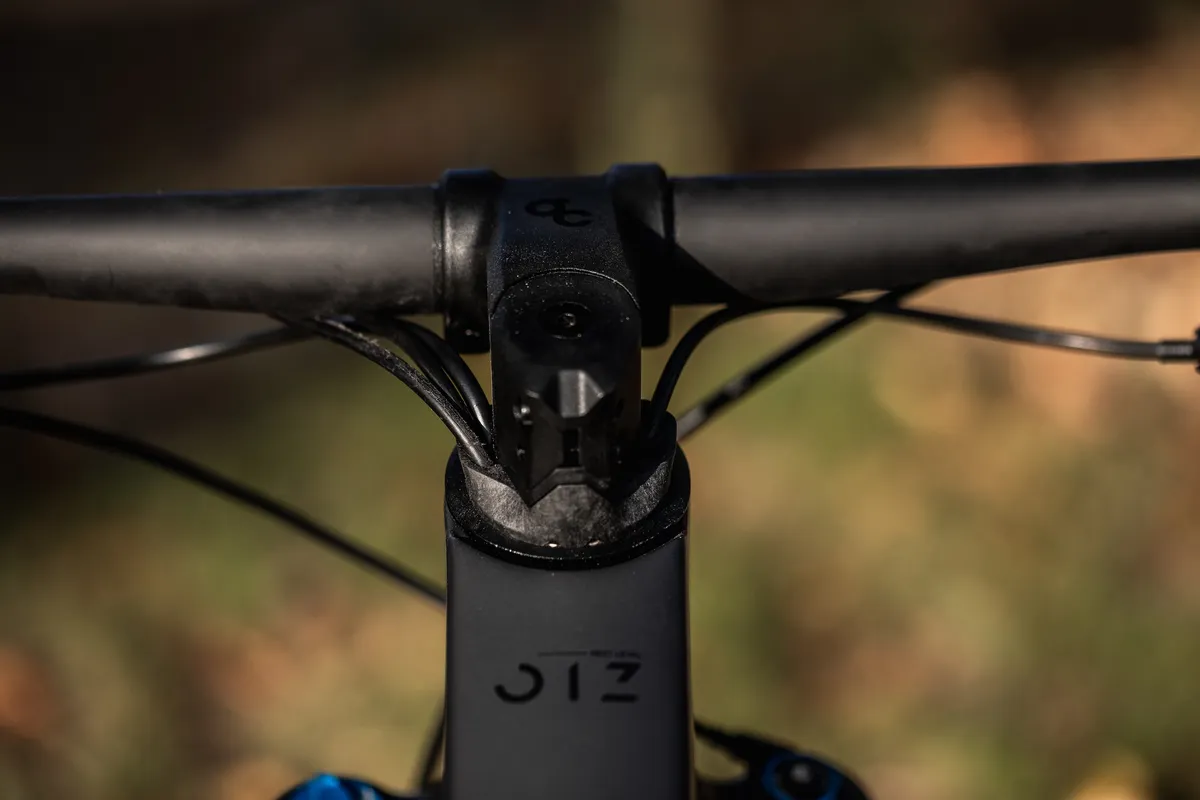
The cable routing into the headset on my bike wasn’t the cleanest, with some cable rubbing on the bars. However, this was due to the dropper post cable being routed the wrong side of the headset, and shouldn’t be an issue on production bikes.
At the rear, internal flexible routing guides hoses and cables past the main pivot, with the headset requiring removal to thread the hoses or cables to the bar.
The geometry has improved compared to the previous-generation bike, with 2 degrees taken off the head angle, around 15mm added to reaches and the seat angle steepened by roughly 1.5 degrees. A full geometry chart is below.
While this doesn’t make it the most radical cross-country bike on the market, in terms of geometry, it’s certainly ahead of the curve.
| Size | s | M | L | XL |
|---|---|---|---|---|
| Seat tube (mm) | 405 | 432 | 460 | 510 |
| Top tube (mm) | 575 | 598 | 623 | 650 |
| Head tube (mm) | 90 | 90 | 100 | 115 |
| Chainstay (mm) | 432 | 432 | 432 | 432 |
| BB height (mm) | 333 | 333 | 333 | 333 |
| BB drop (mm) | 42 | 42 | 42 | 42 |
| Wheelbase (mm) | 1,138 | 1,163 | 1,189 | 1,219 |
| Head angle (degrees) | 67 | 67 | 67 | 67 |
| Seat angle (degrees) | 76.5 | 76.5 | 76.5 | 76.5 |
| Standover (mm) | 731 | 741 | 741 | 750 |
| Reach (mm) | 425 | 450 | 472 | 496 |
| Stack (mm) | 596 | 596 | 606 | 619 |
Extra squish
Orbea has increased suspension travel to 120mm at the front and rear of the bike using a flexstay suspension layout.
The flex is built into the lower section of the seatstays, with this area flattened compared to the rest of the tube.
The main pivot sits just above the chainring. Chainrings are 34t from stock, but up to 38t can be fitted.
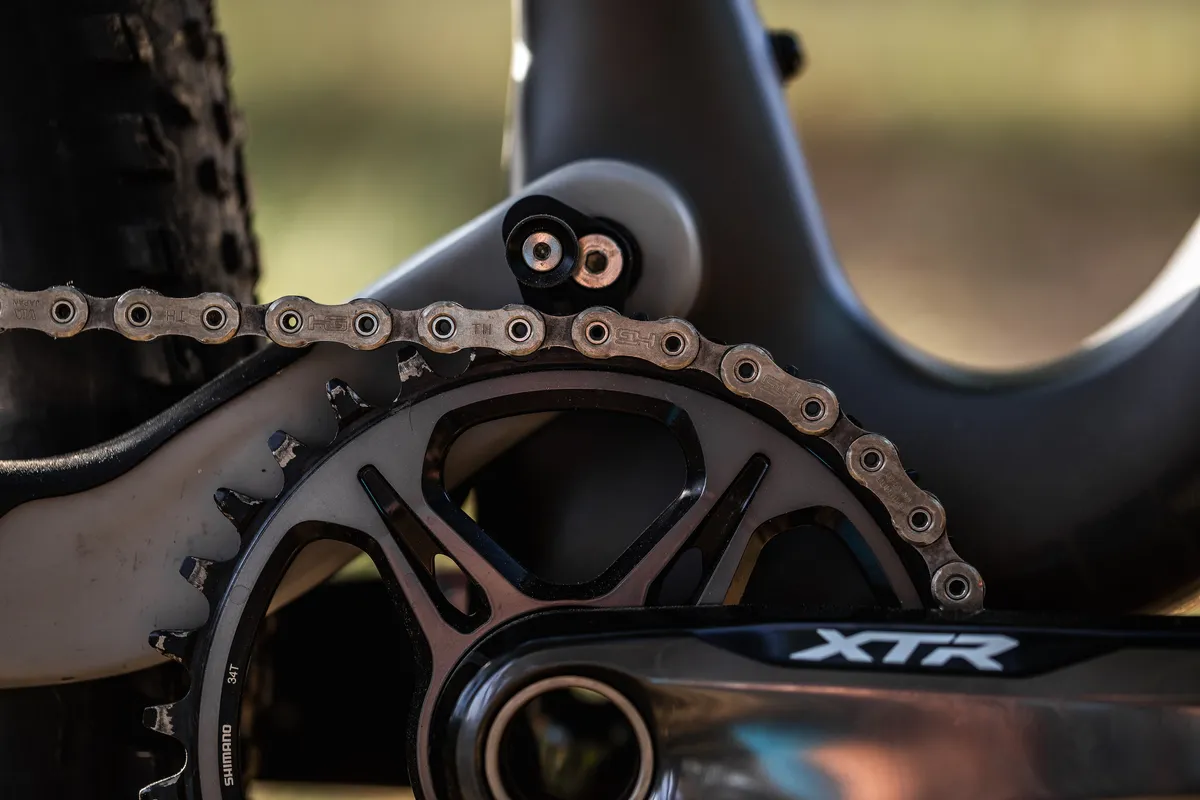
A Fiberlink linkage drives the rear shock, that is nestled below the top tube. The linkage is lighter than the previous version, but has been designed to be stiffer too.
Orbea is moving production of this linkage to Spain, in response to volatility in Asian manufacturing. Bearings have been doubled in size to boost reliability.
Both fork and shock are controlled by Orbea’s Squidlock lever. This gives on-bar control of the Fox shock’s three damping positions (Open, Medium, Firm), and two damping positions of the fork (Open, Firm). In the middle position, the fork is left Open.
Modes can be toggled one click at a time in either direction. The Squidlock lever integrates a vertically mounted dropper lever.
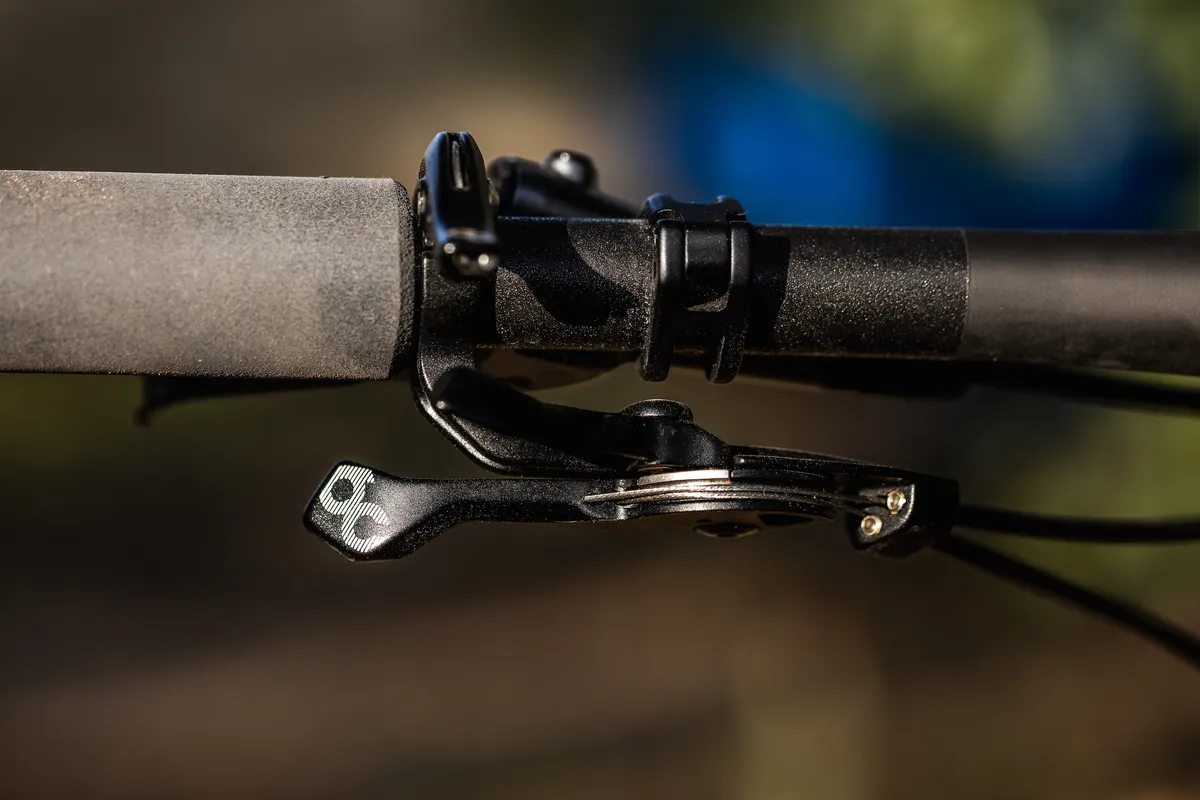
In terms of kinematics, Orbea has changed very little compared to the previous-generation bike, claiming it felt the suspension performance was as it wished in general. Obviously, there’s some alteration due to the increase in travel, but little to write home about.
Rubberised chainstay and 3M tape down tube protections are in place. The frame uses a threaded bottom bracket, and there’s a neat integrated chainguide to keep everything secure.
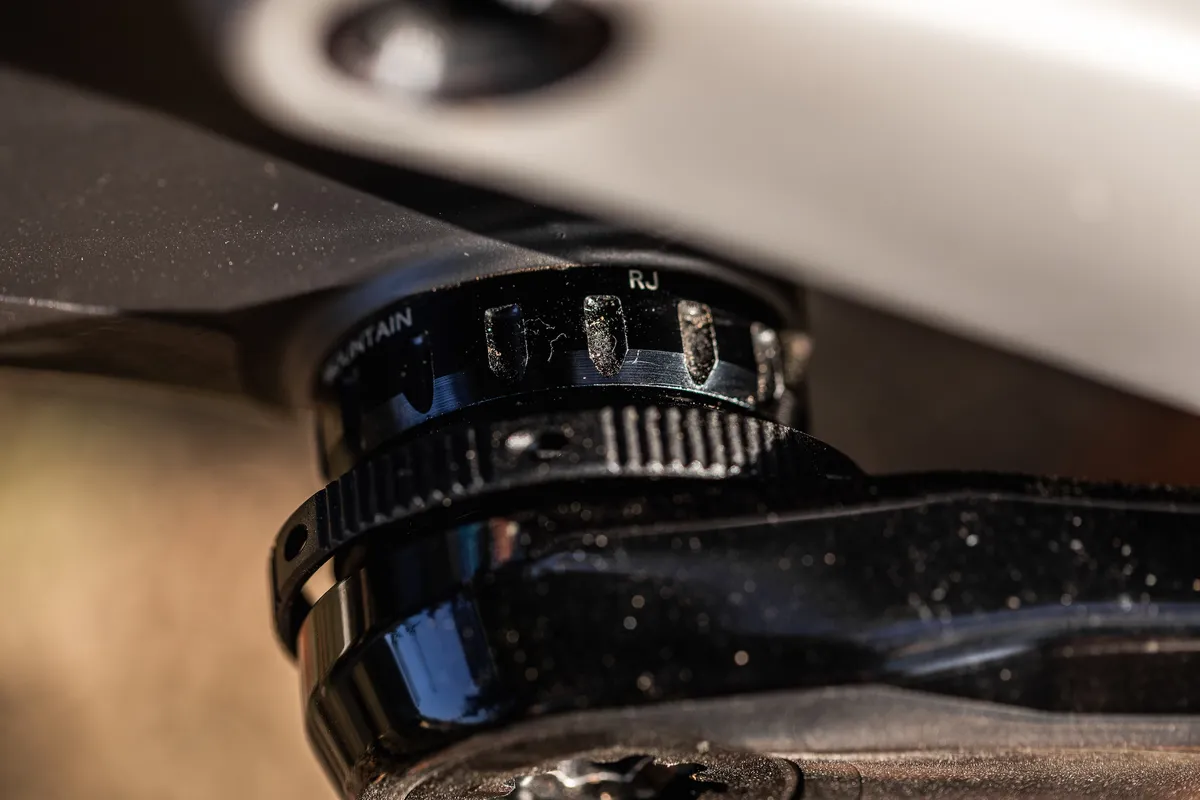
Orbea Oiz M-TEAM specification details
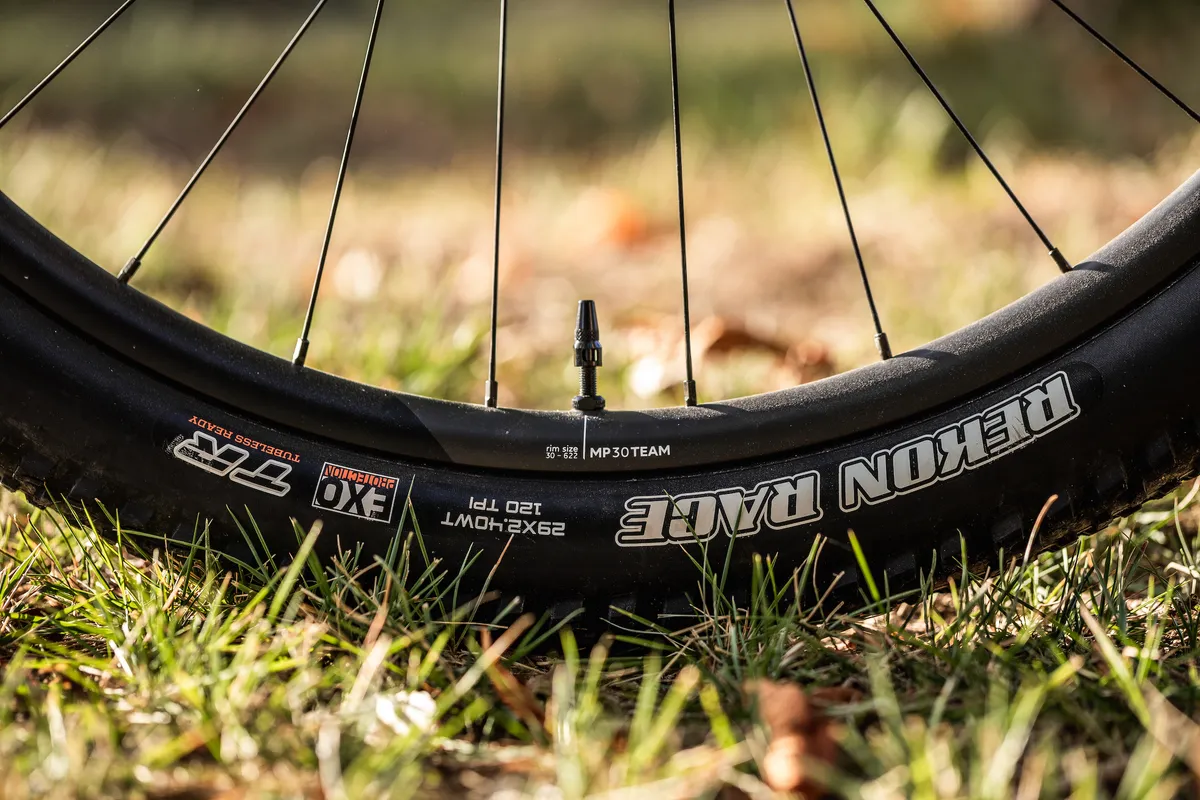
This near-top level Oiz (there’s a SRAM XX1 AXS, M-LTD version too) tips the scales at 10.4kg (Med).
Orbea has added its own Oquo MP30LTD wheels, with 30mm-wide carbon rims, DT Swiss hubs and Sapim spokes. They’re wrapped in my favourite dry-weather XC tyres, Maxxis’ Reckon Race in a 2.4in width.
Fox supplies the suspension, a Float DPS shock and a 120mm 34 StepCast fork, both in the Factory flavour. With the cutaway chassis of the StepCast design, there's little weight penalty for going for the larger-diameter stanchions of the 34, and at 120mm travel, there’s no 32 StepCast available anyway.
Shimano’s XTR drivetrain and 2-piston brakes provide the stop-and-go. Its top-level mechanical drivetrain is, in my opinion, the best cable-operated drivetrain on the market. The brakes are light and moderately punchy, but the Race levers lack the adjustability of the Trail levers, even if they do get fancy carbon lever blades.
A Fox Transfer SL dropper, with 100mm travel, moves the saddle up and down, while Orbea’s own OC MP10 finishing kit, including a lightweight, 2-bolt wraparound stem completes the picture – aside from silicone ESI grips.
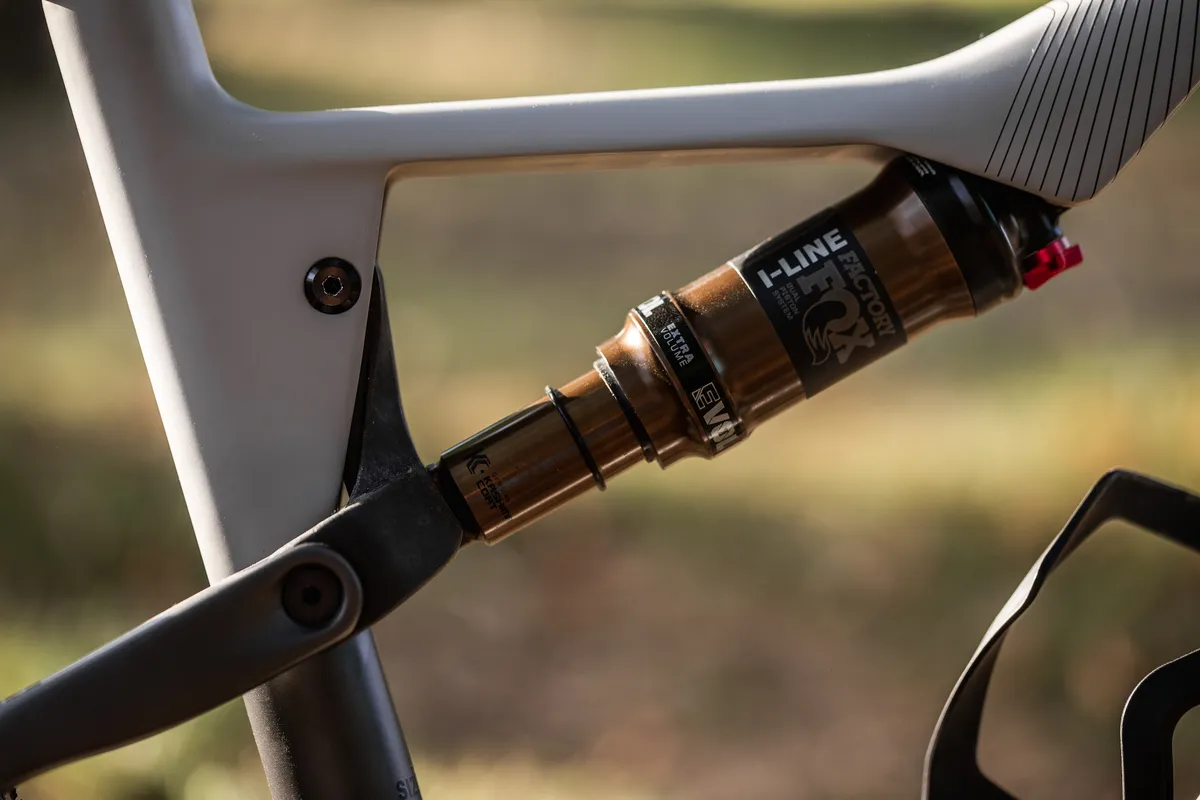
When purchasing the bike, there are other spec options that can be chosen. These include a Maxxis Dissector front tyre (perhaps a handy UK addition), wider bars and shorter stems, and a different-length dropper.
The bike is also part of Orbea's MyO programme. This enables you to customise various paint panels and logos with myriad colour options for a truly unique-looking bike. This option doesn't add to the cost, but Orbea says it will delay shipping by a relatively short period of time.
Orbea Oiz M-TEAM ride impressions

I tested the Oiz over two rides in northern Spain, in what can only be called a ‘punchy’ manner – trying to keep up with some race-seasoned pros and semi-pros, with my heart rate maxing out on a regular basis.
The trails were very dry and dusty, the climbs fierce, and descents ridden as hard as I could given the tyre’s file treads, and unknowns beyond the next corners.
I’m hoping to get the bike in the UK for a full review, on home trails, in due course.
Orbea Oiz M-TEAM climbing performance
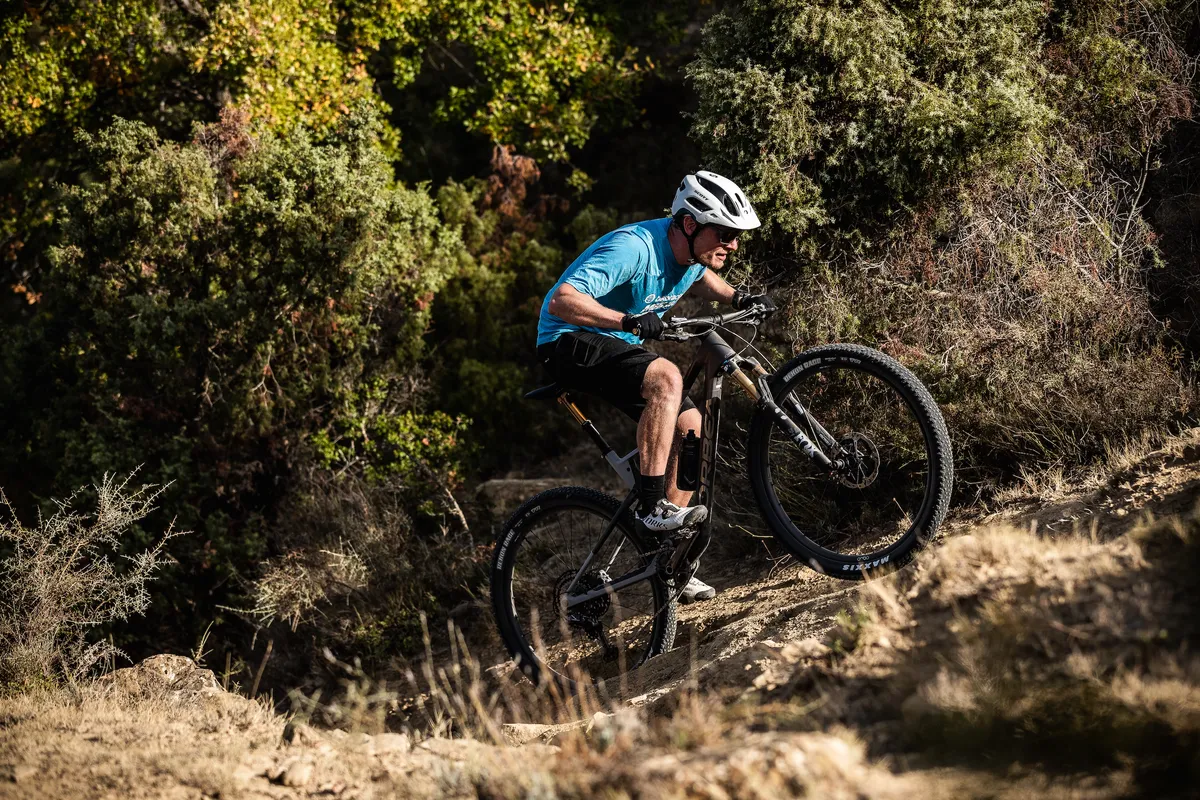
At the heart of any XC bike’s performance is how well it climbs.
From the bottom, the Rekon Race tyres give little hinderance. The central tread is low in depth and closely packed, meaning rolling resistance on smoother surfaces is minimal. Their 120 TPI carcass helps keep weight low, adding to the low rotating mass of the carbon rims. Both contribute towards giving the Oiz a zippy feel under spurts of power.
The rims’ 30mm internal width enables moderately low pressures – I was running 22psi in the front and 24psi in the rear over incredibly rocky terrain.
The supple carcass seemed to help generate more grip on technical, steep climbs than I was expecting. However, on gravel drags it was possible to get the rear wheel to brake traction when pedalling with little grace.
Firmed up
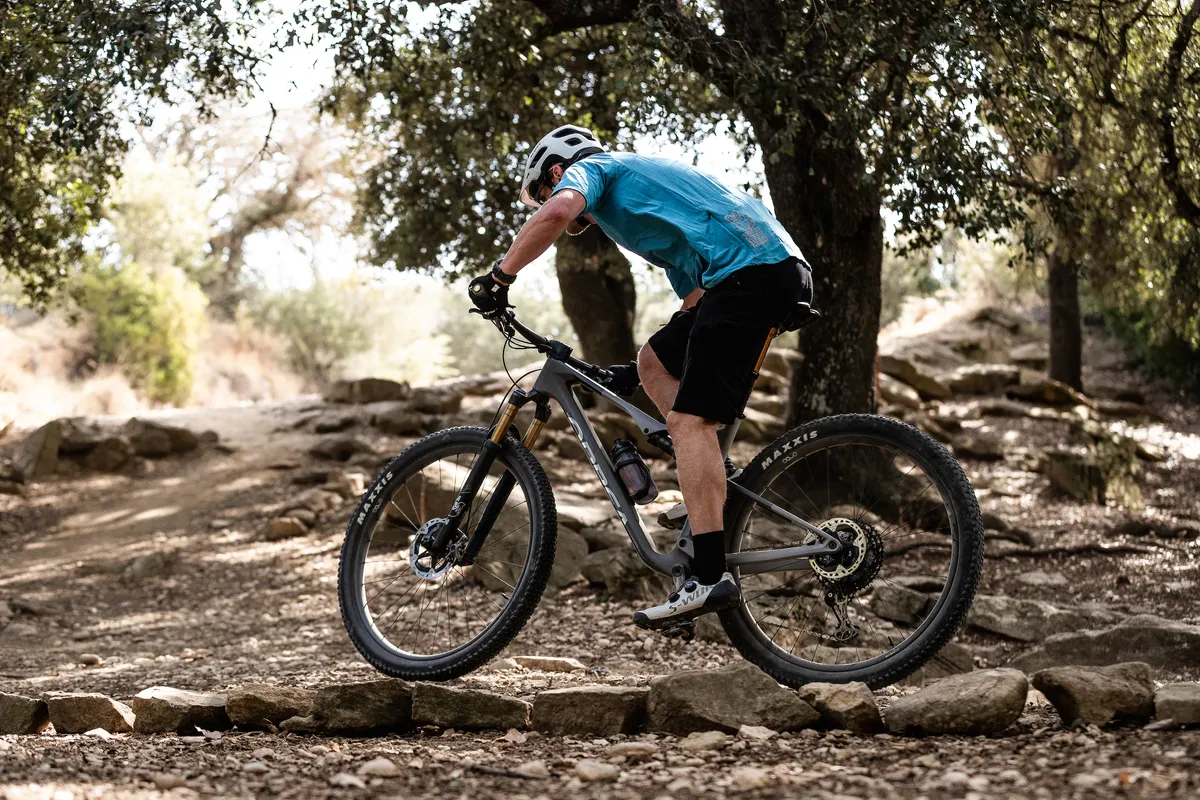
The suspension feels efficient when climbing. In Open mode, there is little pedal bob until you stand up and mash the pedals – pedalling smoothly therefore results in efficient height gain.
I used the Open mode on technical climbs, allowing the rear wheel to move freely over rocks and steps, bolstering the Rekon’s surprising traction levels.
I used the Medium mode on the bulk of off-road climbs. There’s still some shock movement, to help with traction, but there’s an obvious platform that you can feel as the shock compresses. When it moved through this platform, I felt a bit of a clunk.
This helps keep the bike feeling efficient when stood up, because it’s not dipping into its travel through pedal bob.
It also serves to help keep the geometry as climbing-focused as possible. The shock sags less, so the effective seat angle remains relatively steep.
On smooth dirt roads or on tarmac, I used the Firm position quite a bit, as my legs felt the strain of the high pace.
Both fork and shock are put into an almost-locked mode, with no pedal bob to sap leg power. In this mode, there’s less traction on offer and it’s just left to the tyre to generate grip.
The Squidlock defaults to locked, and requires a push to move into the more open suspension settings. It’s a comfortable lever to use, and I never found myself mis-hitting it.
Push-to-open isn’t the most intuitive, but would become easy with muscle memory. This is a function of Fox’s damper architecture.
The geometry of the bike poses no problems on the climbs. The seat angle is fairly steep, and so your body weight is nicely centred, while your hips are well-placed over the pedals.
The front-end length is roomy, so lungs stay open and there’s ample room to move forward and back to regulate traction and direction.
Orbea Oiz M-TEAM descending performance
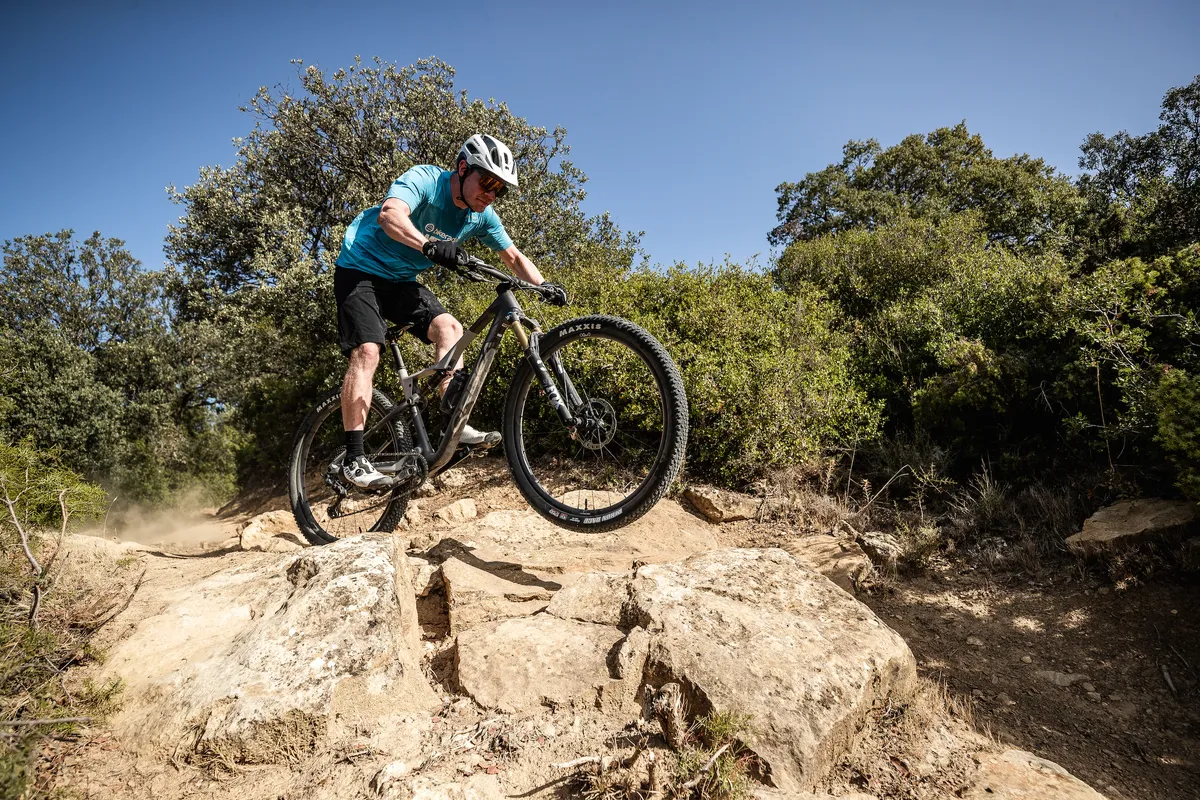
The key evolution on this latest-generation Oiz is the addition of 20mm travel.
Overall, it’s difficult to see downsides at this point. The weight of the bike is still competitive, the packaging of the travel doesn't hamper the geometry, and more travel means more wiggle room when things get technical.
Orbea seemed keen to add that it’s the lightweight nature of the Fox 34 SC fork that allows this. It’s a fork I saw recently on the Giant Anthem, which has 110mm travel at the front, with 100mm at the back.
On descents, the extra travel is most noticeable when you really rattle it through technical sections.
There’s not so much travel that the bike feels vague or ‘squishy’, but hit an unexpected drop or square edge, and the little extra travel just gives you a bit more safety.
At the front, the stiffer 34mm chassis is noticeable over lightweight 32mm stanchions, with less twist and twang when trails get techy. For such minimal weight gain, it's a performance boost I'd happily have time and again.
The Oiz’s pedalling performance uphill contributes to how the bike feels on the descents.

The rear end, though plentiful in travel, isn’t the smoothest, with the rear wheel often skipping about, especially under braking, and some pedal feedback.
This is the obvious compromise with having a more stable pedalling platform.
You win some, you lose some
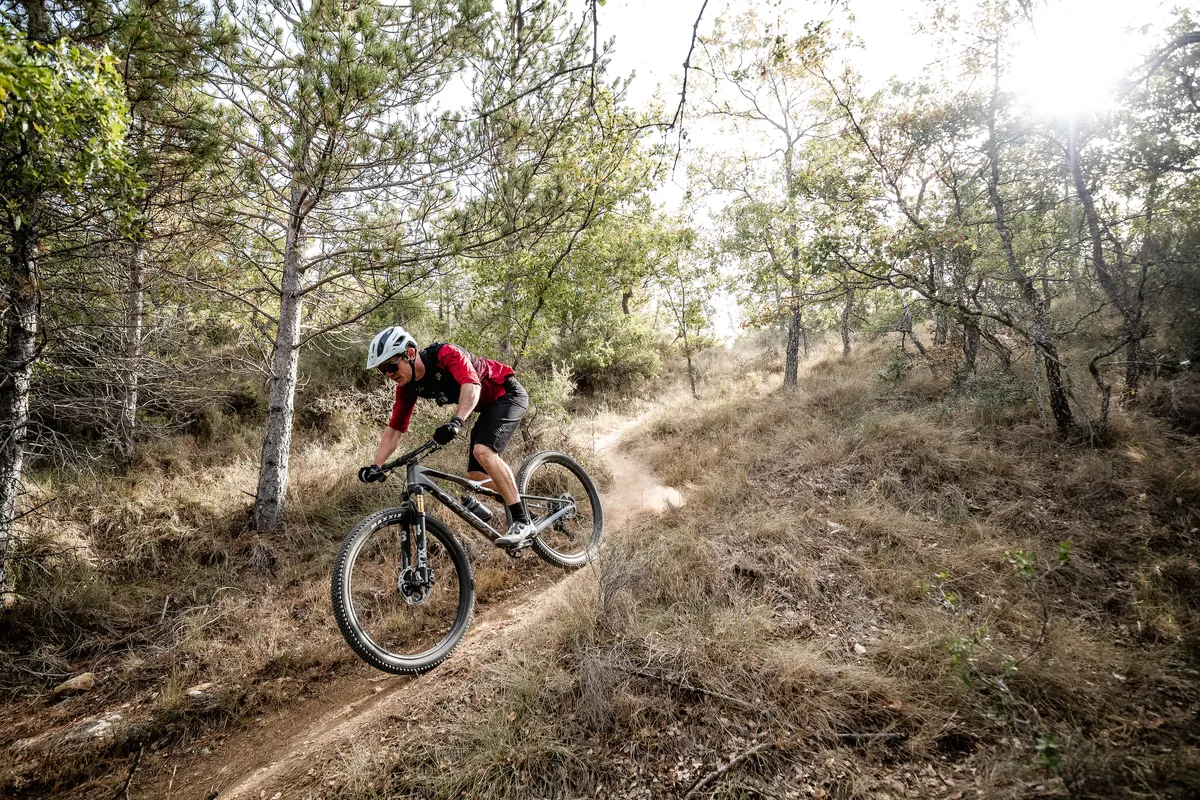
On the other hand, it was rare that this made the bike a handful to control, nor did it lead to discomfort on the long 60k marathon ride we did.
In comparison to the Giant Anthem, the Oiz is better at pedalling (whether uphill or along the flat), but not as smooth as the Anthem on descents – when both bikes are left with their suspension open.
In this sense, the Oiz has a pretty classic-feeling XC back end.
Geometry wise, Orbea has done the right thing. A ‘traditionally’-shaped XC bike with more travel would still feel sketchy on technical terrain. By lengthening the front and slackening the head angle, the Oiz is a confident and competent descender.
The rear triangle has been kept short, at 432mm, so at no point did the Oiz feel reticent to change direction. However, aim it down a fast, rough trail, or tip it into a steep corner, and there’s plenty to like.
While I love the Rekon Race, it has its compromises. Braking traction isn’t the best, and cornering on loose surfaces can be 'exciting'. However, the slight shoulder tread the tyre has makes a massive difference to cornering traction on all but the most marginal terrain when compared to even more pared-down rubber, such as Schwalbe's Thunder Burt or even Maxxis' Ikon.
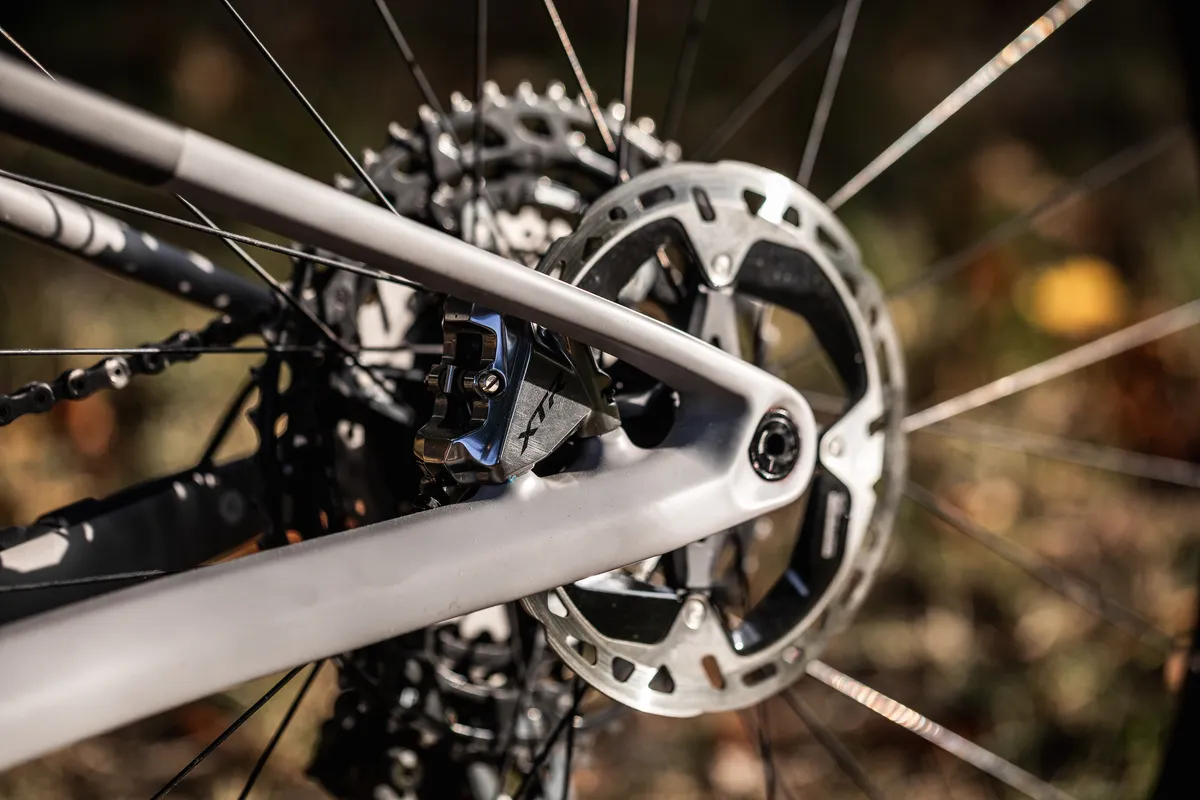
In terms of the rest of the specification, the cockpit felt good, though there’s a hint of harshness through the fork’s damper.
The Fox Transfer SL post is a slick performer, but doesn’t have infinite travel – I occasionally found myself weighting it too early on its return stroke, pushing the saddle back down to the bottom.
Shimano’s XTR drivetrain was faultless, but I would have liked a touch more power from the front brake.
Product
| Brand | orbea |
| Price | 7999.00 EUR,8399.00 GBP,8599.00 USD |
| Weight | 10.5000, KILOGRAM (Large) - |
Features
| Fork | Fox 34 Float SC Factory 120 FIT4 |
| br_stem | OC Mountain Performance MP10 Alu SL, -10o |
| br_chain | Shimano XTR |
| br_frame | OMX Carbon |
| Tyres | Maxxis Rekon Race 2.40” WT 120 TPI Exo TLR |
| br_brakes | Shimano XTR |
| br_cranks | Shimano XTR 34t |
| br_saddle | Selle Italia SLR Boost Fill Titanium Rail |
| br_wheels | OQUO Mountain Performance MP30TEAM Carbon |
| br_shifter | Shimano XTR |
| br_cassette | Shimano XTR |
| br_seatpost | Fox Transfer SL Factory Kashima |
| br_handlebar | OC MP10 Mountain Performance Carbon |
| br_rearShock | Fox i-line DPS Factory |
| br_bottomBracket | Shimano XTR |
| br_availableSizes | S, M, L, XL |
| br_rearDerailleur | Shimano XTR |
